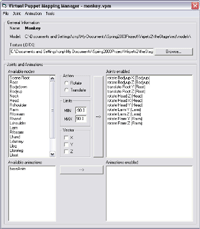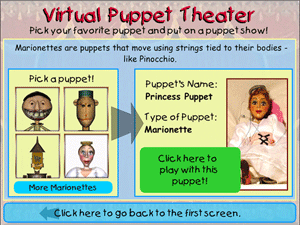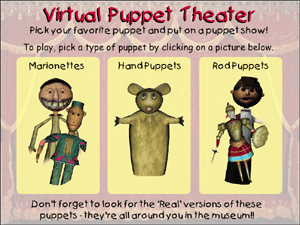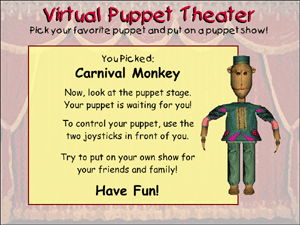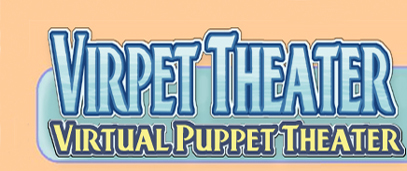


Background The Virpets technology was first created by students Shawn Patton, Elan Ruskin, Jon Parise, and Ken Strickland, who worked with advisor Frank Garvey to create a digital performance medium. It was then adapted by Cort Stratton and Ingrid Moncada in the Spring of 2002 and used to “perform” Rift, a theatrical piece created expressly for the medium. Our group has been charged with using the Virpets software as the basis for a compelling interactive museum exhibit for children.
The Virpets software system consists of three main components:
The Virpets Theatre system also includes the following new components: •
Graphical user interface for puppet selection (Director MX)
INTERFACE DESIGN AND GUEST TESTING Target Audience & Inherent Challenges Ours is an exciting challenge – design a technology-heavy interactive museum exhibit for children from 4-7 years of age. A few of the unique challenges that our young user base presents: -
Reading & Writing Ability As a result, our methodologies will differ somewhat from standard user testing methods. We will not be attempting to gain quantitative knowledge from these tests – rather, we will concentrate on gathering as much from observation as we can. When appropriate (and permissible), we will also tape interviews with the children to get their reactions to the system. A large part of designing any interactive experience for children is putting said experiences through the rigors of repeated playtesting “in the field.” This is especially important for the Virpets Theater team, since we have very little in common with our intended guests. We must examine everything from the input devices to the backdrops we create from a child’s point of view. We have developed a preliminary plan to address this need that includes a minimum of 4 live tests at the Museum. What follows is an enumeration of said plans along with an examination of our target audience, as well as our findings so far. Interface Design The
key challenge in designing the Virpets Theater guest interface
is the struggle between educational content and simplicity of
design. The simplest design would be a simple “list”
of puppet pictures that allows children to click on their favorite
puppet and begin. However, the Children’s Museum would like
this to be an educational experience, and this means sacrificing
a bit of simplicity in the process. |


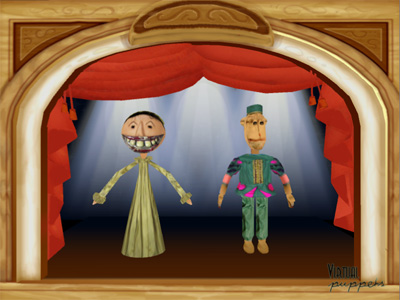 The
Stage
The
Stage 